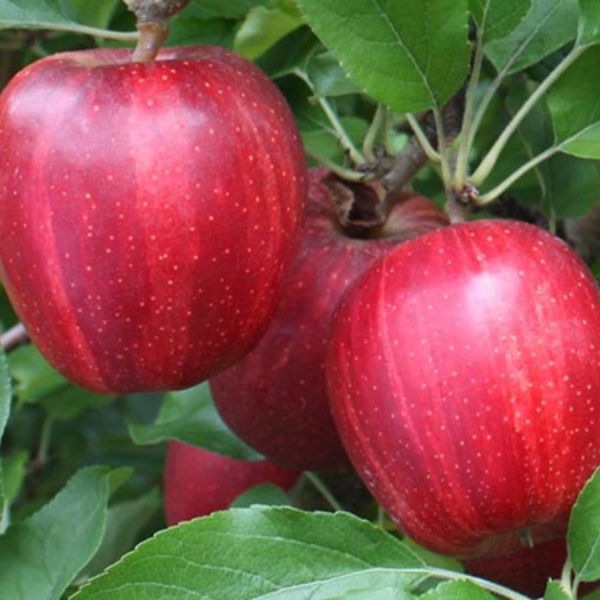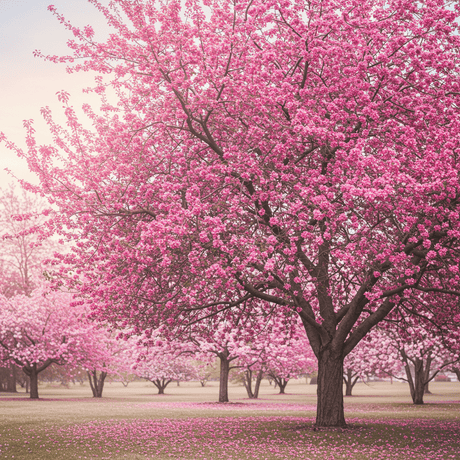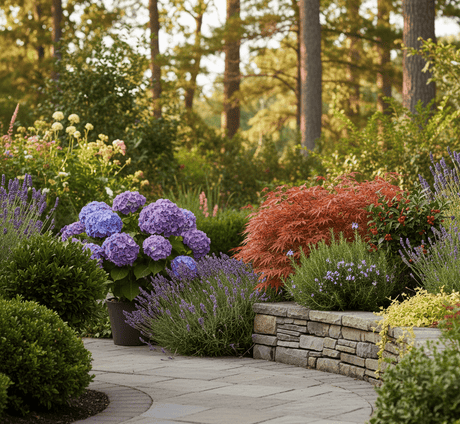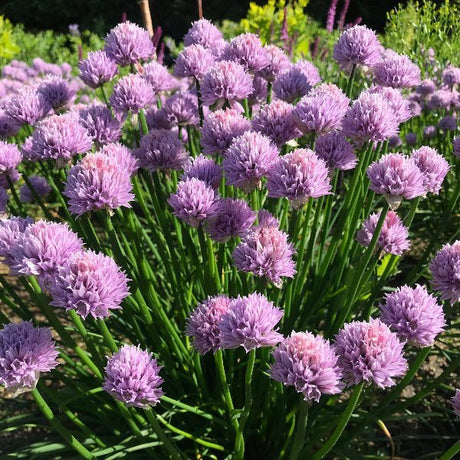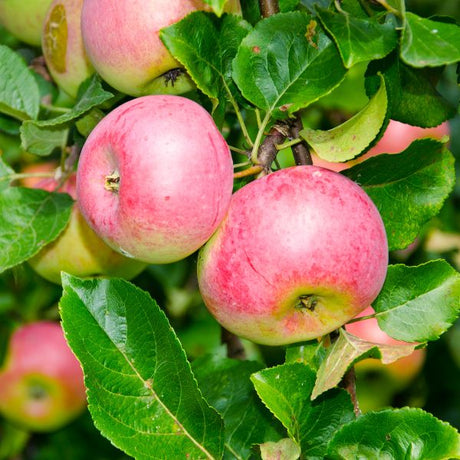Buckeye® Prime Gala Apple Tree
Malus 'Buckeye Prime Gala'
- Stay Protected with Plant Sentry ™
Buckeye® Prime Gala Apple Tree is backordered and will ship as soon as it is back in stock.
Plant Sentry™
Plant Sentry™

Plant Sentry™ Protected
Your order is protected by our compliance system that:
- Prevents restricted plants from shipping to your state
- Ensures plants meet your state's agricultural requirements
- Protects gardens from invasive pests and diseases
Delivery and Shipping
Delivery and Shipping
Delivery and Shipping
Fast, Safe Plant Delivery
Ships in 3-4 business days • Tracking provided • Weather protected
| Under $50 | $9.99 |
| $50 - $99.99 | $14.99 |
| $100 - $149.99 | $16.99 |
| $150 - $198.99 | $24.99 |
| $199+ | FREE |
✓ Zone-specific timing • ✓ Professional packaging • ✓ Health guarantee
Understanding Plant Options
Nature Hills offers plants in two main formats:
- Container Plants: Grown in pots with soil, sized by container volume and plant age
- Bare Root Plants: Dormant plants without soil, sized by height measurements
Container Plant Sizes
Container sizes indicate plant age and growing capacity rather than liquid volume equivalents. Our containers follow industry-standard nursery "trade gallon" specifications, which differ from standard liquid gallon measurements.
Young Plants (6 months to 18 months old)
| Container Size | Actual Volume | Metric Equivalent |
|---|---|---|
| 2" x 2" x 3" | 0.18 - 0.21 dry quarts | 0.20 - 0.23 dry liters |
| 4" Container | 0.31 - 0.87 dry quarts | 0.35 - 0.96 dry liters |
| 4.5" Container | 0.65 dry quarts | 0.72 dry liters |
| 6" Container | 1.4 dry quarts | 1.59 dry liters |
| 1 Quart | 1 dry quart | 1.1 dry liters |
| 5.5" Container | 1.89 dry quarts | 2.08 dry liters |
Established Plants (18 months to 2.5 years old)
| Container Size | Actual Volume | Metric Equivalent |
|---|---|---|
| 2 Quart | 2 dry quarts | 2.2 dry liters |
| #1 Container | 2.26 - 3.73 dry quarts | 2.49 - 4.11 dry liters |
| 5" x 5" x 12" | 3.5 - 4.3 dry quarts | 3.85 - 4.74 dry liters |
Mature Plants (2-4 years old)
| Container Size | Actual Volume | Metric Equivalent |
|---|---|---|
| #2 Container | 1.19 - 1.76 dry gallons | 5.24 - 7.75 dry liters |
| #3 Container | 2.15 - 2.76 dry gallons | 8.14 - 12.16 dry liters |
Large Plants (3-5 years old)
| Container Size | Actual Volume | Metric Equivalent |
|---|---|---|
| #5 Container | 2.92 - 4.62 dry gallons | 12.86 - 20.35 dry liters |
| #6 Container | 5.25 - 6.01 dry gallons | 23.12 - 26.42 dry liters |
| #7 Container | 5.98 - 6.53 dry gallons | 26.34 - 28.76 dry liters |
Bare Root Plants
Bare root plants are sold by height from the root system to the top of the plant. Plants may exceed minimum height requirements.
Common Sizes:
- Trees: 1 foot, 2 feet, 3 feet, 4 feet, 5 feet, 6 feet
- Shrubs & Perennials: 1 foot, 18 inches, 2 feet
Important Notes
Container Volume Specifications
- Trade Gallon Standard: Our containers follow industry-standard "trade gallon" specifications established by the American National Standards Institute (ANSI Z60.1) for nursery stock
- Volume Variations: Actual soil volume may vary due to plant root systems and growing medium settlement
- Age Indicators: Container size primarily indicates plant age and maturity rather than liquid volume equivalents
Growing Conditions
- Plant size can vary based on variety and growing conditions
- Container size helps indicate plant maturity and establishment level
- Larger containers generally mean more established root systems and faster landscape establishment
Seasonal Availability
- Bare root plants are available seasonally when dormant
- Container plants are available throughout the growing season
- Specific varieties may have limited availability in certain sizes
Questions?
For questions about specific plant sizes or availability, please contact our plant experts who can help you choose the right size for your landscape needs.
Plant Highlights
Buckeye® Prime Gala Apple Tree highlights at a glance!
-
Botanical Name
-
Brand
-
Growing Zones5, 6, 7, 8
-
Growth RateModerate
-
Mature Height
-
Mature Width
-
Leaf Color
-
Flower Color
-
Fall Color
-
Pollinator FriendlyYes
-
Pollinator Required
-
Bloom PeriodEarly Spring, Late Spring
-
Harvest Time
-
FragrantYes
Characteristics
Where To Plant
When To Prune
- Early Spring
Water & Moisture Needs
- Moderate
Sunlight Needs
Soil Needs
- Well Drained Soil
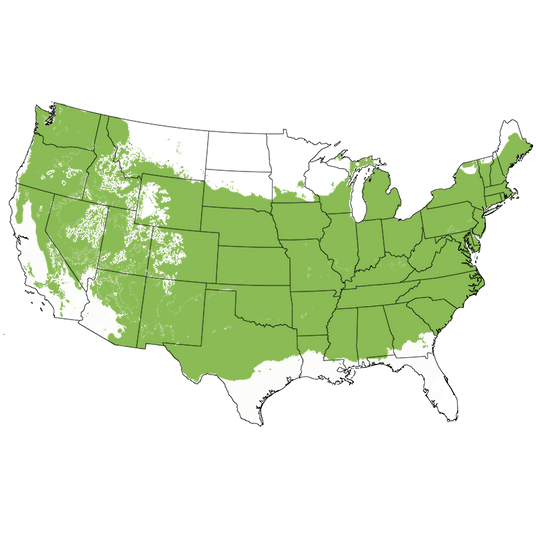
Growing Zones 5 - 8
Get to know the next generation of Gala's! Introducing the Buckeye® Prime Gala Apple Tree PP24,639 (Malus 'Buckeye Prime Gala') which is an early-season ripening tree with a vigorous crop of next-level Gala Apple fruit!
The season starts with a flourish of fragrant white flowers that the bees and butterflies adore! Buckeye® Prime is virtually 100% brighter cherry red-skinned with a bolder, darker red striping and the same ability as its parent to produce high-quality, beautiful Apples. Great for fresh eating, cooking, and baking, this later-ripening Apple keeps up to seven months in proper storage.
Buckeye® Prime retains the original Buckeye ability to color in hot climates, growing beautifully throughout USDA planting zones 5 to 8. These are mid-sized Apple trees growing 12-18 feet tall and 10-12 feet wide, making it easier for you to include Buckeye® Prime and its pollinator tree in your landscape.
Planting and Application:
Galas are also dependably productive, setting a great crop year to year. Although considered partially self-fruitful in some zones, a pollination partner is recommended for the largest harvest. Also, for longer harvests, we recommend planting your early-season Buckeye® Prime Gala Apple Tree with a mid-season and a late-season pollinator tree.
It's delightful when the Gala bursts to life in spring. The beautiful pink buds will open to reveal snowy white flowers, a sure sign that the tree is well on its way to producing bushels of Apples. With a Gala, you'll have plenty to share with family and friends. We're talking about bushel after bushel of delicious snacking Apples that the whole family can love from a single tree.
Buckeye® Prime Gala Apple is mid-sized and easily fits right into the home orchard or landscape. Its smaller size means no problem making room for its pollination partner too! Try using high-density planting techniques if space is tight. You can even prune your tree smaller and keep it more shrub-like for space-saving and easier harvesting!
- Fragrant Drifts of White Spring Blooms
- Mid-Sized Tree & Handsome Form
- Deep Cherry Red Striped Fruit
- Same Great Gala Flavor
- Extended Ripening - September Harvest
- Great Fresh Eating & Snacking Apple Stores Up To 6 Months
- Beautiful Edible landscaping, Ornamental & Orchard Specimen
#ProPlantTips for Care:
Plant Apple Trees in full sun for the best performance! Doing especially well with access to the morning sun that dries the leaves of dew. As with all Apple varieties, Buckeye® Prime Gala likes slightly acidic, enriched, well-drained soil with a pH between 6.0 to 6.5. In colder climates, select a location with good air circulation. Avoid low-lying areas of settling cold with little or no air movement.
It's easy to keep your semi-dwarf fruit tree pruned to remain at an easier picking height. Simply plan to do summer pruning to keep your tree at a reasonable height. It's important to mulch around the perimeter of your tree which keeps the root system cool and holds moisture in the soil more consistently. Read more about Apple tree care and pruning in the Nature Hills #ProPlantTips Blog!
This tree needs a pollinator for the best crop possible, including White flowering Centennial and Chestnut Crabapples, Cortland, Cox's Orange Pippin, CrimsonCrisp, Cripps Red, and Pink, Discovery, Enterprise, Freedom, Fuji, Gold Rush, Honeycrisp, Jonathan, SnowSweet, SunCrisp, Wealthy, and Wolf River.
- Full Sun
- Well-Drained Enriched Soil
- Regular Water
- Prune When Dormant
- ~500 Chill Hours
New and improved with a richer red color, the Buckeye® Prime Gala Apple Tree will set itself apart from its parent plant and carry on the future of the Gala Apple family in your orchard! Now available for shipment to your doorstep from Nature Hills Nursery!
Buckeye® Prime Gala Apple Tree FAQ's
When to Plant Apple Trees
Planting Bareroot trees as soon as you can dig a hole in spring and until hot weather, the earlier the better. Plant container Apple trees throughout the growing season with complete success - that is the benefit of container plants - to extend the planting season. Your County Agricultural Extension Office is a great resource for first and last frost dates in your area.
How to Plant Apple Trees
Dig a large hole only as deep as needed to accommodate the bareroot or container root ball, and twice as wide. Add Nature Hills Root Booster to speed root establishment. Remove the pot or bag and situate it into the hole so the top of the soil (soil line if bareroot), is level with the new location's soil being careful not to plant too deep. Water in again very well and backfill with the same soil you dug up, tamping down gently to ensure there are no air pockets.
Top off with a 3-4 inch thick layer of Arborist mulch. Consider staking your tree to keep its trunk growing straight for the first year to ensure it stands tall against strong winds and drifting snow.
When to Prune Apple Trees
Trim off any broken branches from delivery as soon as you take them out of the box. Prune and trim Apple trees while dormant, in late winter or early spring, before you see new growth.
How to Prune Apple Trees
Dormant prune to:
- Remove any double leaders or narrow crotch angles
- Eliminate any crossing branches
- Thin interior branching and leave the fruiting spurs and strong branches in place opening up the canopy
- Branching at least 24-36 inches above the ground
Prune Apple trees in the summer to:
- Control size and shape by reducing the length of longer new growth on vigorous trees
- Remove water sprouts on the main trunk or older branches in the crown
- Remove suckers at the base of the trunk
- Thin fruit during heavy years on established trees
How to Care For Buckeye® Prime Gala Apple Trees
Growing an Apple tree is easy when proper soil, good drainage, attention to moisture, and regular fertility are maintained. Once you've chosen an Apple tree that works for your climate, in the size you need for your landscape, and its pollinator (if needed), then you've accomplished half the battle!
- Apple trees do best in full sun and well-drained soil
- Water your Apple trees when they get dry - especially during the fruit production stage, and drought periods to keep it stress-free
- Use arborists' wood chips to mulch over the roots of your Apples and have your soil tested to see what your soil may be lacking before adding fertilizers
- Maintenance pruning and shaping
Apple trees will tolerate a wide range of soils, so long as water and nutrients are not limited and the pH level is adequate.
How to Fertilize Buckeye® Prime Gala Apple Trees
For the first year, water alone is most important. It is always best to get a soil test to see what your soil is lacking before adding more fertilizers. Once established, a fertilizer routine may be beneficial. We do offer some excellent slow-release organic options, applied according to the package directions.
Fruit trees need more phosphate and it's possible to apply too much nitrogen which affects the soil's pH. Test soil acidity or alkalinity using a pH Tester.
Fertilize in spring when you first see new growth emerging.
- Don't overdo it
- Phosphates are your friends
- Pay attention to pH in areas with extremely high or low soil pH
- Follow the directions
Buckeye® Prime Gala Apple Tree Pollinating Info
Buckeye® Prime is partially self-fruiting and doesn't need a pollinating partner, but will bear much more fruit when paired with these varieties:
- White Flowering Crabapples -Centennial or Chestnut Crabapple
- Cortland
- Cox's Orange Pippin
- CrimsonCrisp
- Cripps Red, and Pink
- Discovery
- Enterprise
- Freedom
- Fuji
- Gold Rush
- Honeycrisp
- Jonathan
- SnowSweet
- SunCrisp
- Wealthy
- Wolf River
Harvest Times for Buckeye® Prime Gala Apple Trees
Buckeye® Prime Gala's are typically ready to harvest in August to September.
Early-Season? Mid-Season? Late-Season? The terminology can be confusing for new Apple tree growers. Weather, climate and your tree determine when it's ripe.
For Apples:
- Early-season is usually June-July
- Mid-season can be August-September
- Late-season can be from late September-November
The growing season consists of spring, summer, and fall, and varies with climate and weather. Areas with longer growing seasons in the warmer hardiness zones can greatly affect the harvest times for each particular Apple variety grown in your area. Learn which growing zone you are in.
What Shipping Options Do You Offer?
NatureHills.com works closely with our growers and nursery professionals to ensure we ship when it is most appropriate for your area. Our goal is to deliver the hardiest plants by avoiding extreme high and low temperatures. Check out our shipping schedule for more information and to learn our wills and won'ts when it comes to shipping plants. Find your Apple Tree for sale here at NatureHills.com!
Rootstocks Explained
Apple trees have been grafted onto different rootstocks since before the mid-1800s. Different rootstocks are used to improve the anchoring of trees, eliminate diseases, and reduce the natural mature size of the tree itself. While there are many different types of rootstock, they are all labeled as being either Dwarf, Semi-Dwarf, or Standard.
The Apple descriptions, including flowering, pollination, and Apple characteristics are the same whether the plant is grown on a standard rootstock or some varying dwarfing rootstock. The overall size can vary by climate and soil but the understock used is ultimately what affects the mature size.
There will be some variation in sizes but as a guide, we are suggesting the overall mature size of these Apple varieties are:
Semi-Dwarf Apples
- Height: 12-18 feet
- Spread: 10 - 15 feet
Standard Apples
- Height 18 - 25 feet
- Spread: 15 - 18 feet
Remember that all fruit tree sizes can easily be altered if needed by simple pruning as the trees grow and develop.

